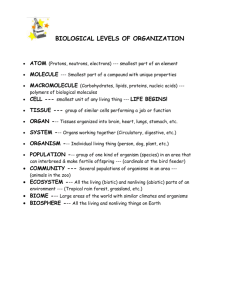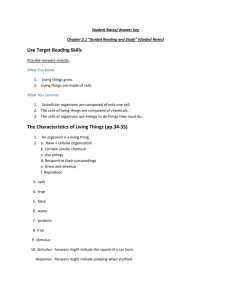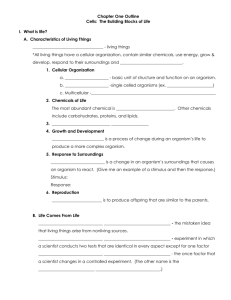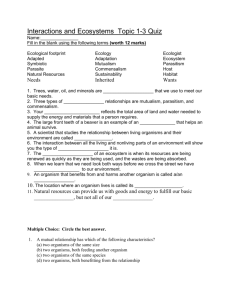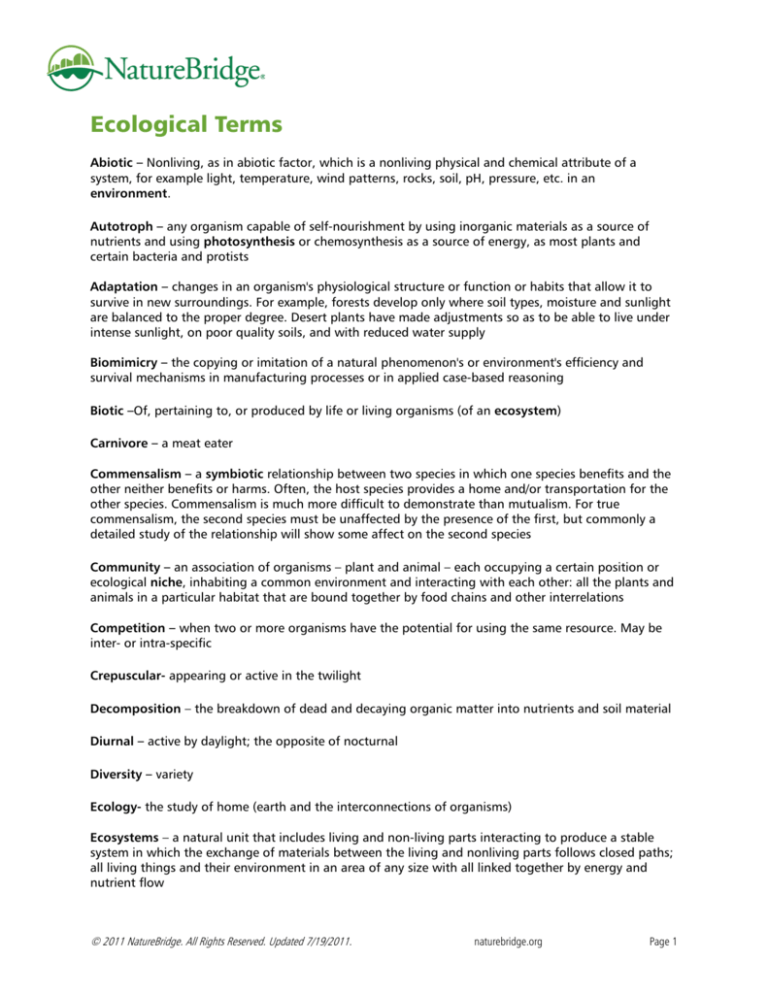
Ecological Terms
Abiotic – Nonliving, as in abiotic factor, which is a nonliving physical and chemical attribute of a
system, for example light, temperature, wind patterns, rocks, soil, pH, pressure, etc. in an
environment.
Autotroph – any organism capable of self-nourishment by using inorganic materials as a source of
nutrients and using photosynthesis or chemosynthesis as a source of energy, as most plants and
certain bacteria and protists
Adaptation – changes in an organism's physiological structure or function or habits that allow it to
survive in new surroundings. For example, forests develop only where soil types, moisture and sunlight
are balanced to the proper degree. Desert plants have made adjustments so as to be able to live under
intense sunlight, on poor quality soils, and with reduced water supply
Biomimicry – the copying or imitation of a natural phenomenon's or environment's efficiency and
survival mechanisms in manufacturing processes or in applied case-based reasoning
Biotic –Of, pertaining to, or produced by life or living organisms (of an ecosystem)
Carnivore – a meat eater
Commensalism – a symbiotic relationship between two species in which one species benefits and the
other neither benefits or harms. Often, the host species provides a home and/or transportation for the
other species. Commensalism is much more difficult to demonstrate than mutualism. For true
commensalism, the second species must be unaffected by the presence of the first, but commonly a
detailed study of the relationship will show some affect on the second species
Community – an association of organisms – plant and animal – each occupying a certain position or
ecological niche, inhabiting a common environment and interacting with each other: all the plants and
animals in a particular habitat that are bound together by food chains and other interrelations
Competition – when two or more organisms have the potential for using the same resource. May be
inter- or intra-specific
Crepuscular- appearing or active in the twilight
Decomposition – the breakdown of dead and decaying organic matter into nutrients and soil material
Diurnal – active by daylight; the opposite of nocturnal
Diversity – variety
Ecology- the study of home (earth and the interconnections of organisms)
Ecosystems – a natural unit that includes living and non-living parts interacting to produce a stable
system in which the exchange of materials between the living and nonliving parts follows closed paths;
all living things and their environment in an area of any size with all linked together by energy and
nutrient flow
© 2011 NatureBridge. All Rights Reserved. Updated 7/19/2011.
naturebridge.org
Page 1
Environment – the total of all of the surroundings – air, water, vegetation, human element, wildlife –
that has influence on you and your existence, including physical, biological and all other factors; the
surroundings of a plant or animal including other plants and animals, climate and location
Exotic – in conservation language, this refers to a foreign plant or animal – one that has been
introduced into a new area
Herbivore – a plant eater
Hibernation – the act of passing the winter, or a portion of it, in a state of sleep: a torpid or resting
state
Inhabitable: a place that can support the life and growth of an organism
Interdependence – the interrelationships of wildlife with one another and with the various elements of
their environment
Mutualism– a relationship between two species of organisms in which both benefit from the
association-a type of symbiosis
Niche – the position or function of an organism in a community of plants and animals
Nocturnal – active by night; the opposite of diurnal
Omnivore – an animal that eats both plant and animal materials
Organism – a living thing; a form of life composed of mutually dependent parts that maintains various
vital processes
Parasitism – is a type of symbiotic relationship between organisms of different species where one
organism, the parasite, benefits at the expense of the host
Photosynthesis – the process by which green plants produce their food (carbohydrates) from water,
carbon dioxide, and minerals, using the sun’s energy
Predator – an animal that kills and eats other animals
Prey – animals that are killed and eaten by other animals
Productive/photic zone: a region (depth) of the ocean that is exposed to sufficient sunlight for
photosynthesis to occur
Saprophyte – an organism living on dead organic matter; neither parasitic nor making its own food
Symbiosis – A close, prolonged association between two or more different organisms of different
species that may, but does not necessarily, benefit each member
© 2011 NatureBridge. All Rights Reserved. Updated 7/19/2011.
naturebridge.org
Page 2

